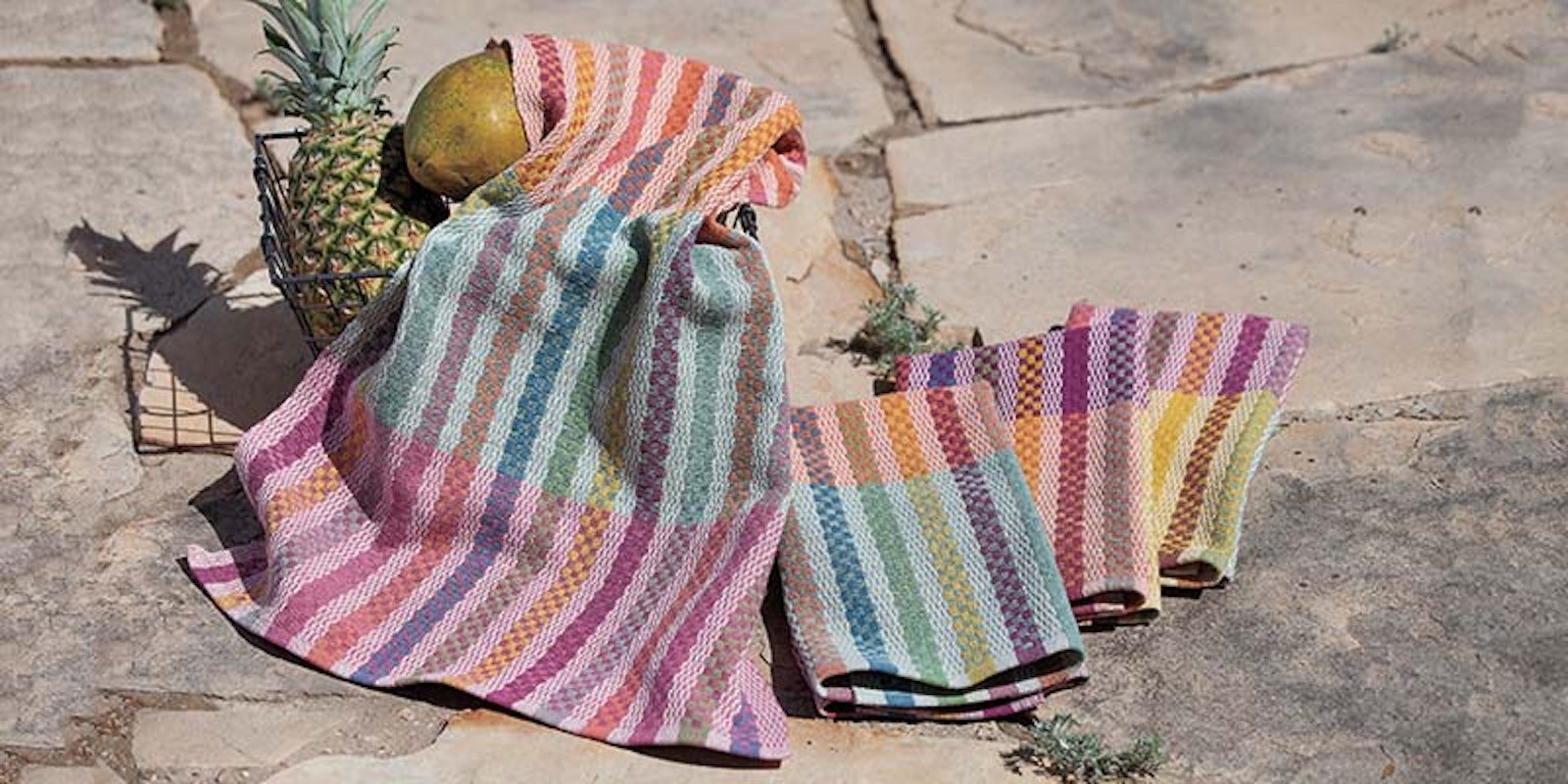Lifelong backstrap weavers, the Maya Achi women of San Rafael weave for the income it provides and because they love it. But they need more income than they have been able to earn with their looms, so when they were offered the chance to learn natural dyeing, a tradition that existed for millennia in Guatemala but has been lost, they accepted. That was five years ago, and they are still accepting, learning more in the hope that it will soon yield additional income for their families.
In March, 2013, natural-dye pros Catharine Ellis and Donna Brown spent three days in this village outside of Rabinal, Baja Verapaz. In March of 2014, Donna returned for a 4-day workshop, along with dyers Diane de Souza and Rocío Mena Gutierrez. All four of the women have donated their tremendous expertise as well as their own plane fare, travel expenses, and dye materials to Tintes Naturales, the dye project backed by the fair-trade organization Mayan Hands, which has worked with the women of San Rafael since 1998.
 |
| Left to right: Berta, Venancia, Donna, Elvira, Abelina, Diane, Gilberta, Rocío, Rosa María, Fulgencia |
The teachers started each class by asking the women where they felt solid and what gaps they had in understanding the dye process. They also talked about the women’s goals, in general and for the week of the workshop. If the underlying goal was to create a product that would increase their income, what would it take to achieve that? That discussion determined the content and emphasis of the class. The fun part was always to create a beautiful rainbow of reproducible colors.
In the beginning, the idea was to use local dye plants, of which there are many. But with no local dyers left, no one even knew how to draw the dyes from the plants, let alone the differences in color yielded by a newly budding leaf versus an old withering one. Until the women understood how to harvest and dry the plants to get consistent results any time of year, there could be no fixed color palette.
An ever-changing color offering wouldn’t work since the majority of their sales are online where customers see colors and want what they see. For now, the group has shifted to using commercially available powdered natural dyestuffs that produce consistent results. That allowed the women to drop the study of botany and focus on the dye processes. In time, they will learn how to work with what nature offers around them.
The women worked as a team so smoothly that at times it looked like dance. All in their mid-40s, they have been friends since they went to elementary school together, and they have been in the same weaving group for at least fifteen years. Gilberta has been the group leader for more than a decade. Elvira was our host, as her patio became our dye space. Abelina was the clerk and recorder, keeping track of ingredients, quantities, times, etc. She helps Berta keep the atmosphere light with teasing and jokes, even when everyone is collapsing from the inescapable heat. Berta is one of the scale-masters, making sure that every thing is measured correctly. She’s assisted by Venancia, the quiet one who watches everything, stepping in to do whatever is needed. Finally, Fulgencia earned the name Firey Fulgencia, keeper of the flame, as she kept the fires hot or cool enough for each step.
At first, the women wove scarves, shawls, and other beautiful textiles with the 20/2 pearl cotton they had dyed. Now they are entering new territory, dyeing unmercerized 8/2 cotton to sell to weavers in the United States and beyond. Thanks to the design help of Sarah Jackson and the marketing help of Irene Schmoller of Cotton Clouds—also all donated—the women have created kitchen towel kits, allowing other weavers to try the yarn. If all goes well, the next step will be to make the yarns available individually.
—Deborah Chandler

